- Collection Audit & Solutions
- Condition reports
- Painting
- Graphic work and photography
- Sculpture
- Outdoor sculpture
- The Media Arts
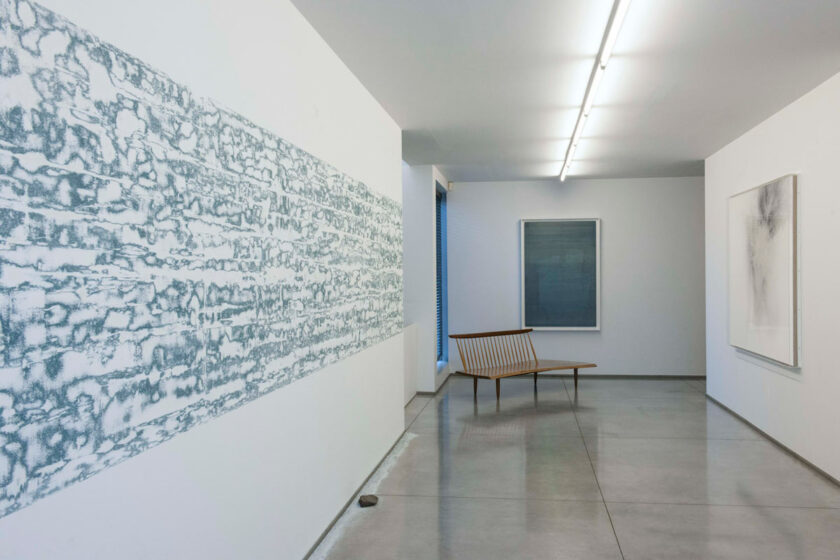
Collection Audit & Services is offering you in full confidentiality specifically customized guidance, analysis and solutions in the areas of the preventive conservation and management of collections.
We define in a comprehensive or specifically targeted manner the actions to be taken to improve the stability over time of any work of art or collection.
Together we develop a daybook which defines the objectives and priorities and thus guarantees the tracking of actions and progress.
Chantier des collection
We also offer a service called “Chantier des Collections” – an overall collection assessment and monitoring program – which consists of the structured organisation of a range of actions: selection, identification, inventory, numbering, condition report, dusting, photographic documentation, packaging, storage.
By whom?
Our multi-disciplinary team of conservators brings together all the skills in the areas of prevention, treatment, protection and valuation of collections.
We also work with professionals chosen and acknowledged in their fields of practice in order to meet any request the final aim of which is to preserve the lifespan and quality of collections.
For whom?
Our services and areas of focus are aimed at collectors and institutions, galleries, dealers and art advisers, artists, architects, transport companies and insurance providers. They comprise:
How
- The analysis of environmental conditions in order to identify major risks and prioritise the proven or potential factors of degradation as well as recommendations and practical solutions.
- Climate
- Biological conditions and pest control
- Location of risks and exhibition conditions
- Management systems
- Optimisation of storage
- The physical analysis of works, their condition, their packaging as well as the necessary actions to guarantee the sustainability of works of art.
- Condition Report
- Packing and conservation materials
- Conservation and restoration
- Framing
- Management of archives and documentation: creating and setting up a complete inventory in a database which is just right for you and gives you access at any time to the information on each work of art.
- Definition of the information required and choice of the database
- Collecting and archiving of documents
- Input of digital data
- Digitalisation of documents
- Photography
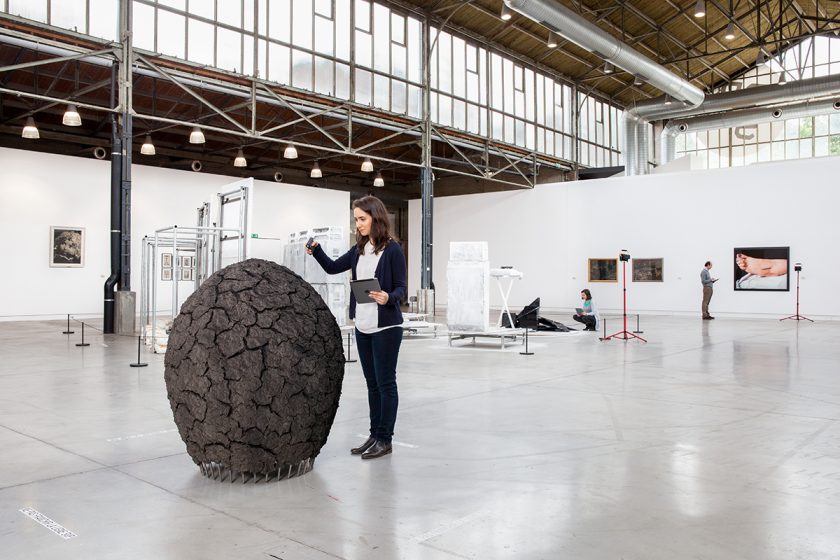
Condition reports
The Lemmens Art Conservation has been providing quality services in condition reports for museums, galleries and private collectors for more than 25 years.
What is a condition report ?
No work of art should ever leave the collection without a condition report drawn up by a specialized conservator. This is the document that establishes the condition of the work on departure. If on return, it happens to be damaged, the condition report is the only means the lender has to prove that the damage occurred while on loan, allowing a claim to be made.
Who needs a condition report ?
If lenders must record the condition of their loans, borrowers must also make sure that they record it at the moment of arrival at the exhibition venue. If there are discrepancies between the two, the lender and the art-shipping company must be contacted immediately to find out what happened and at what stage.
Who establishes a condition report ?
Typically, bigger institutions and museums have their own in-house conservators.
Smaller institutions must hire the services of external conservators, whose role will be to check in-coming loans on behalf of the borrower.
Often the bigger museums also need to hire extra external conservators to cope with the large volume of loans within a very tight installation schedule.
Pre-acquisition reports …
Condition checks are also commissioned from a professional conservator before an acquisition.
The aim of these checks is to estimate the condition, the rate of deterioration and the potential housing and preservation requirements of an artwork.
Failing to look at the artwork from a conservator’s angle can well result in the buyer’s incurring severe, unforeseen expenses or monetary loss.
Condition report: digital, fast and confidential.
The Lemmens Art Conservation developed a digital condition reporting system. The digital system avoids consuming vast amounts of paper and allows a much easier and quicker exchange of information while keeping full control of the delicate issue of confidentiality. The final product is a flat PDF document ready to be e-mailed, stored in a cloud-based application or saved to the internal or external memory peripheral.
* Photo : Exhibition “Uchronies. Collection de la Province de Hainaut”, BPS22, Charleroi, 2016.
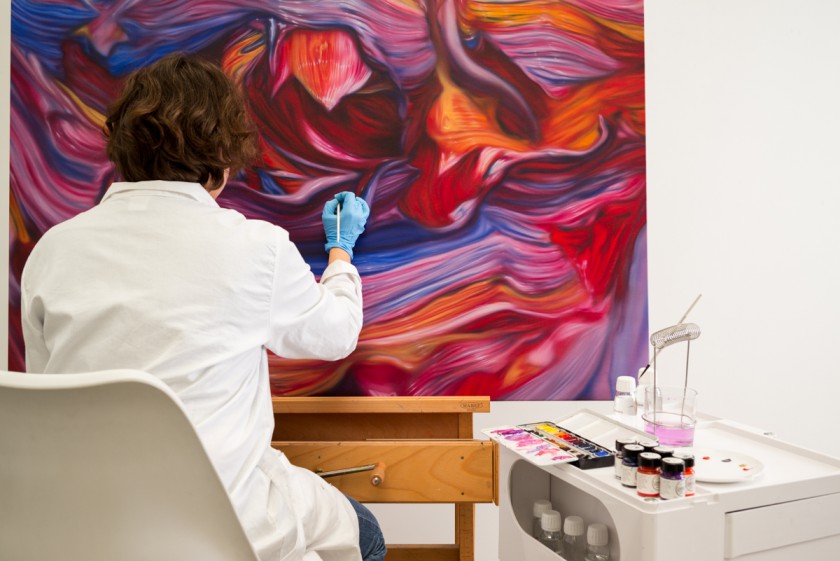
Painting
With more than 25 years of experience and hundreds of paintings restored for the top end of the art market and leading museums, our painting conservation department is the core of the company.
New ways of producing paintings
Modern and contemporary painting is characterized by its experimental nature. Artists, moving away from well-established painting methods and traditional “artist’s materials” have explored new ways to produce paintings. Picasso and his contemporaries made extensive use of house paints on their canvases, a trend that experienced something of an explosion among post-war abstract artists.
New materials
Supports have followed a similar path with the introduction of countless new materials, all of which pose different and often difficult conservation challenges.
New conservation techniques
At the Lemmens Art Conservation, we have been dealing with these challenges for many years. We have found solutions to seemingly impossible cases and pushed the boundaries of conservation techniques while keeping the fundamental principles of quality conservation: Efficiency, stability and reversibility of each one of our materials and interventions.
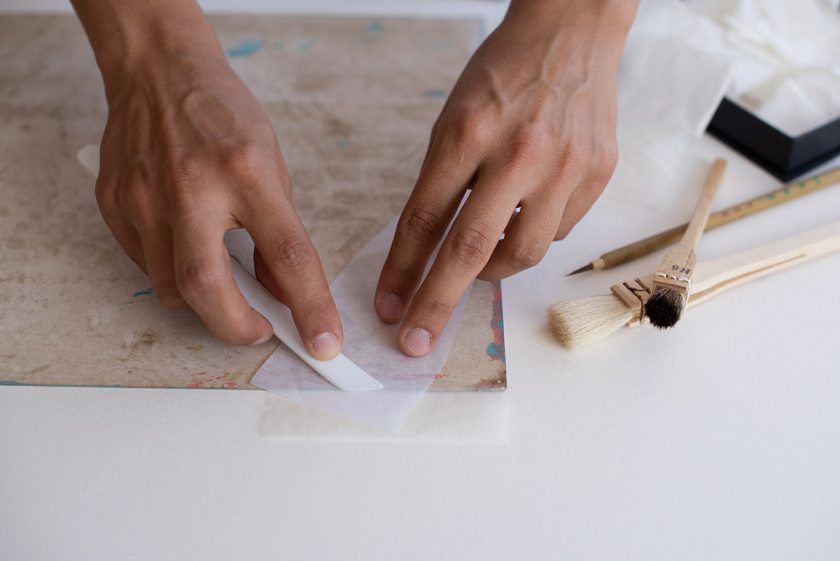
New paper manufacturing techniques
Over the centuries paper manufacturing has undergone numerous innovations, underpinned by aesthetic and economic imperatives. These changes are partly responsible for a drop in the quality of the material. Consequently, it often happens that, due to the low quality of the medium, the modern and contemporary work of art using paper is more fragile than was formerly the case, and this is true despite the art technique used.
Paper constitutes one of the most used media in contemporary art. Moreover, the exhibitions dedicated exclusively to this discipline are numerous.
The specialised team of the Lemmens Art Conservation has taken on this new challenge with a passion, in combining the traditional technique of restoration with the new experimental methodology, with the aim of offering effective solutions in the area of graphic work.
Restoration of photography
Configured as a scientific discipline around 1980, the restoration of photography presents a vast activity field incorporating the complex variety of materials linked to photography.
The Nicolas Lemmens team works together with this sector’s experts to offer specific assistance in the field of the causes of deterioration and in the problems linked to conservation and restoration in this particular discipline.
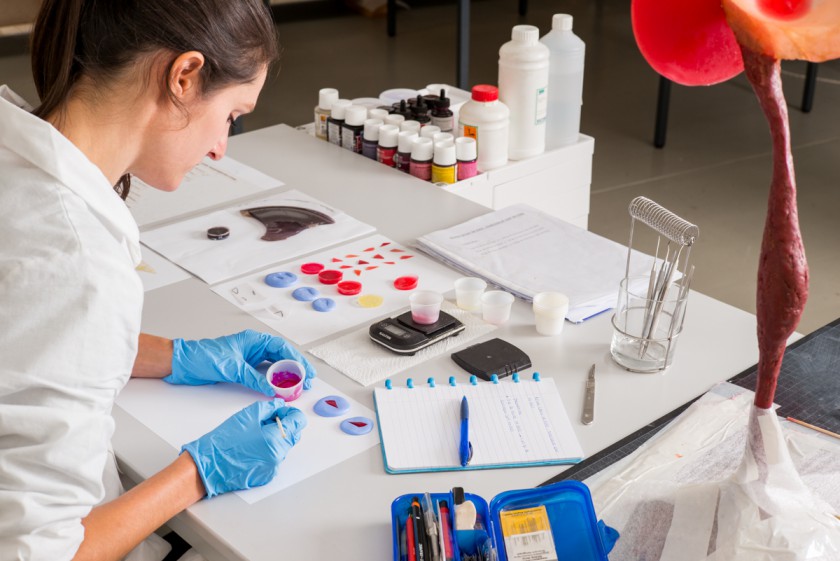
Sculpture
Besides traditional materials such as stone, bronze and wood, contemporary sculpture includes plastic objects, glass, ceramic objects, wax, textiles, paper; all kinds of metal alloys, organic materials, and time based media not included; effectively any material that mankind may use or have produced.
An unpredictable discipline
It is an unpredictable discipline and the most important quality of a contemporary sculpture conservator is their capacity to improvise and respond in an inventive, creative way.
A well-adapted space and mobile unit
Another major component of sculpture conservation is a well-adapted space. At Lemmens Art Conservation we are able to undertake the most complex conservation projects thanks to our new, purpose built sculpture conservation studio. We also have a mobile unit for in-situ interventions.
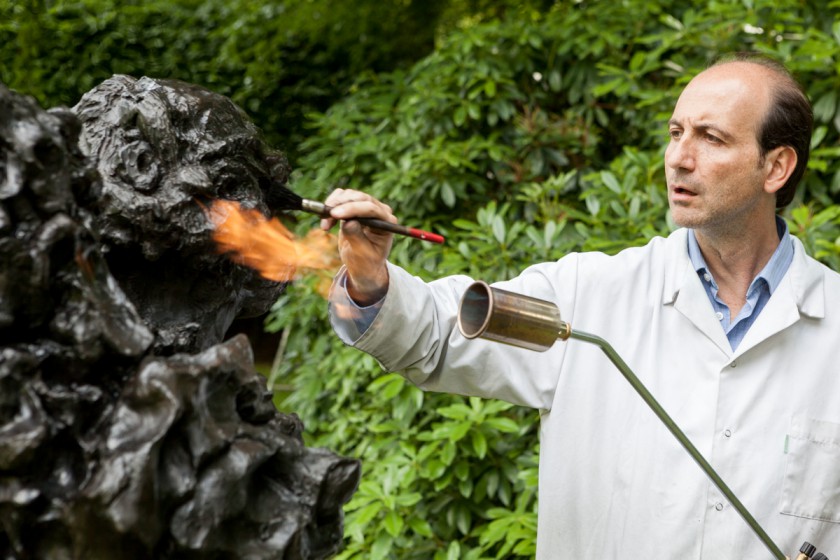
Outdoor sculpture
Keeping outdoor sculpture is a constant battle against the elements, vandalism and pollution.
Withstanding outdoor exposure
Only some metals, stone, ceramics and a few plastic polymers can withstand outdoor exposure. But even they need initial conditioning and the regular attention of specialized conservators. Protective coatings, such as waxes and resins, must be replaced at least once a year. Biological residues must be eradicated, graffiti cleaned, mechanical damage repaired and overhanging trees and foliage cleared.
If these issues are not tackled regularly, the rate of deterioration will increase exponentially and in a short time the condition of the artwork may be compromised.
Maintenance of outdoor projects
For some years, the Lemmens Art Conservation and its mobile unit have been in charge of the maintenance of an ever-increasing number of outdoor projects, such as public and private sculptures, murals and other art-works both within Belgium and abroad.
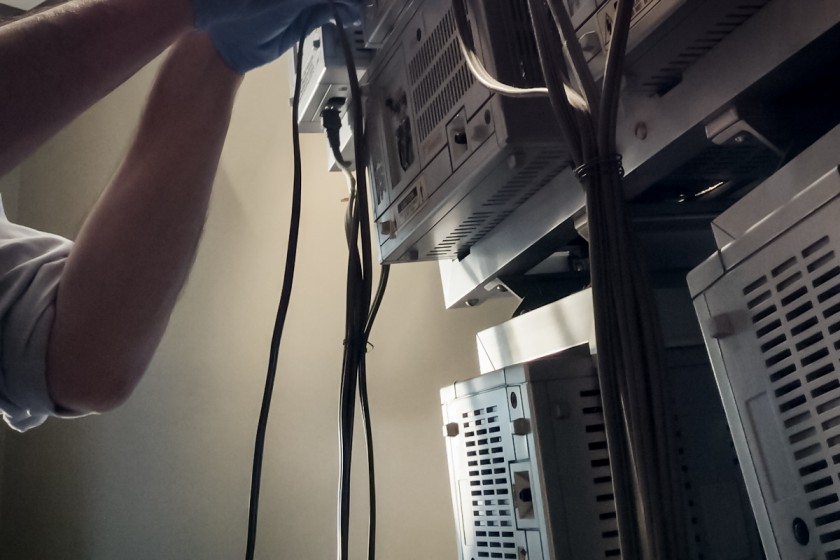
The conservation-restoration of the media arts regularly presents the restorer with new challenges. The works are analogical or digital, mechanical or electronic, sometimes involving objects such as machines, software but even mixed materials, whether these are traditional or not. When being activated, these works generate a dynamic system deployed over time and which are described as temporary (Time Based Media).
The obsolescence and deterioration of the components threaten these works and new documentation and conservation strategies must be adopted in order to pre-empt technological changes while at the same time preserving their authenticity and integrity. Indeed, the constant development of new technologies quickly results in certain features of the works becoming obsolescent, which can be a problem and make it impossible to achieve private or public activation.
Preventive conservation is a key pillar in this area and we work to produce the most exhaustive documentation by means of findings on the state of works and instructions on the handling and long-term conservation of the works of art entrusted to us. Thanks to its dedicated department and a network of experts specialising in the media arts, the Lemmens Art Conservation Studio can find a solution and help with the storage, restoration, emulation and migration of media works.
